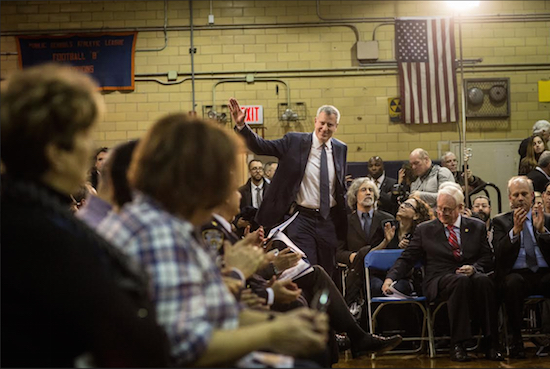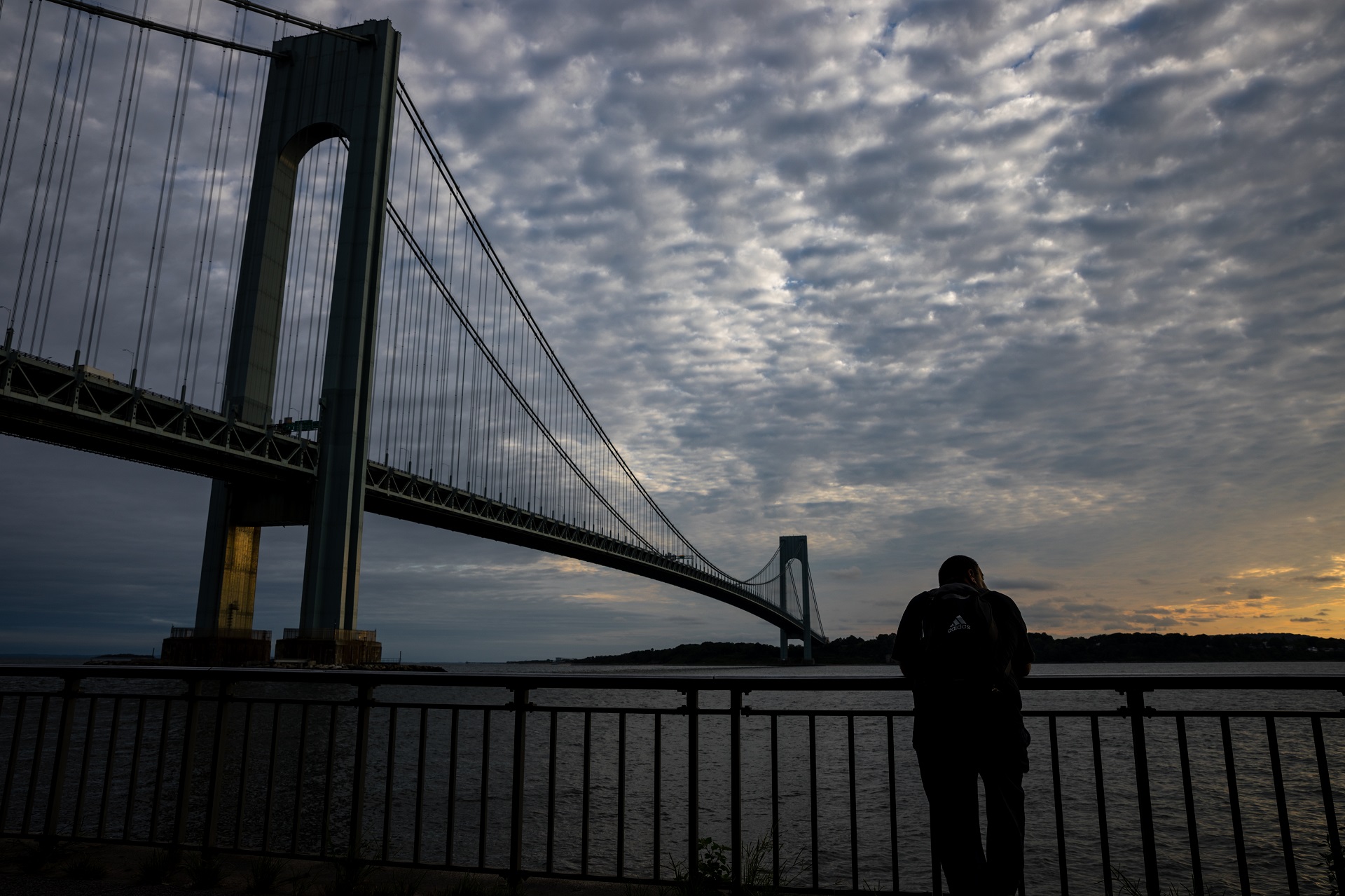De Blasio takes bow after winning affordable housing fight

Mayor Bill de Blasio enters a town hall in Bay Ridge on Feb. 16. Photo by Michael Appleton/Mayoral Photo Office
Fresh off his big victory in the affordable housing fight, Mayor Bill de Blasio took a bow, sending an email out to Democratic supporters boasting that his grand plan will secure 200,000 affordable apartments by the year 2024.
“Wherever I go in our city, people from all walks of life come up to me, literally grabbing me by the arm, all saying the same thing: ‘I’ve got to talk to you, because I don’t know if I can afford to stay here. I don’t know if I’m going to be priced out of my own city,’” de Blasio wrote in an email that went out to thousands of supporters on March 23.
“We won’t let people be pushed aside because they can’t afford this city,” the mayor wrote.
